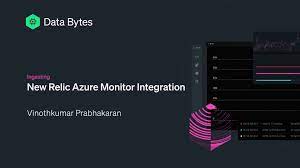Synthetics monitoring plays a crucial role in ensuring the reliability and performance of web applications and services. New Relic is a popular platform that provides robust tools for monitoring synthetic transactions and tracking the performance of web applications. In this comprehensive guide, we’ll walk you through the step-by-step process of setting up synthetics monitoring in New Relic, covering everything from creating monitors to analyzing performance data.
Table of Contents
Understanding Synthetics Monitoring
Synthetics monitoring involves simulating user interactions with web applications and services to monitor their availability, functionality, and performance. By creating synthetic transactions, organizations can proactively detect issues, such as downtime, slow response times, or errors, before they impact real users.
Getting Started with New Relic Synthetics
Step 1: Sign Up for New Relic Account
- If you haven’t already, sign up for a New Relic account at newrelic.com and log in to the New Relic One dashboard.
Step 2: Access Synthetics Monitoring
- Navigate to the Synthetics section in the New Relic One dashboard to access the Synthetics Monitoring features.
Step 3: Create a Monitor
- Click on the “Create a monitor” button to create a new synthetic monitor. Choose the type of monitor you want to create, such as ping, browser, or API test.
Step 4: Configure Monitor Settings
- Configure the settings for your monitor, including the URL to monitor, frequency of checks, locations from which to run the tests, and notification settings.
Step 5: Define Check Conditions
- Define the conditions that trigger alerts, such as response time thresholds, error rates, or specific content validation criteria.
Step 6: Save and Deploy Monitor
- Save your monitor settings and deploy the monitor to start monitoring your web application or service.
Analyzing Synthetics Data in New Relic
Step 1: View Monitor Results
- Navigate to the Synthetics section to view the results of your monitors. Monitor dashboards provide insights into uptime, response time, and other performance metrics.
Step 2: Investigate Failures
- In case of monitor failures or performance issues, use the monitor details page to investigate the root cause of the problem. View detailed logs, screenshots, and error messages to diagnose the issue.
Step 3: Set Up Alerting Policies
- Configure alerting policies to receive notifications via email, SMS, or other channels when monitors encounter issues or fail to meet performance thresholds.
Step 4: Analyze Trends and Patterns
- Use New Relic Insights or other analytics tools to analyze trends and patterns in synthetics monitoring data. Identify recurring issues, performance bottlenecks, and areas for optimization.
Best Practices for Effective Synthetics Monitoring
- Create Diverse Monitors: Use a combination of ping, browser, and API monitors to comprehensively monitor different aspects of your web application or service.
- Optimize Test Frequency: Adjust the frequency of monitor checks based on the criticality of the application and the desired level of monitoring granularity.
- Configure Intelligent Alerting: Fine-tune alerting thresholds and conditions to minimize false positives and ensure timely notifications for critical issues.
- Collaborate Across Teams: Involve stakeholders from development, operations, and business teams in setting up synthetics monitoring and interpreting performance data.
Synthetics monitoring is a powerful tool for ensuring the reliability, availability, and performance of web applications and services. By leveraging New Relic’s Synthetics Monitoring features and following best practices for setup and configuration, organizations can proactively detect and address issues, optimize performance, and deliver exceptional user experiences. With effective synthetics monitoring in place, businesses can stay ahead of potential problems and maintain the highest standards of performance and reliability for their digital assets.
SF
